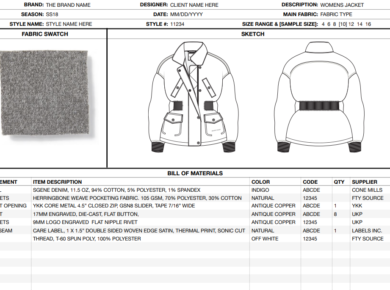As someone who has been in the offshore sourcing industry for many years, I have noticed a general trend. Buyer / supplier relationships, do not tend to last for more than a few years.
There are obviously a multitude of reasons for this. In fact, a thesis could probably be written on the subject (if it hasn’t already).
Instead of writing the above-mentioned thesis, I have decided, simply to offer some key advise to suppliers, on how to retain customers.
At Sourcing Playground, our commitment to both our buyers and suppliers, is absolute.
It has been said many times, “It is far cheaper to keep an existing customer, than find a new one”. Unfortunately, when things get a bit rough in a relationship, this simple phrase is forgotten.
So, what are the practical ways to keep a buyer for as long as possible?
Here’s what to do.
Communicate correctly
- Ensure you answer your buyer’s mails or return calls timeously. It is extremely frustrating for a buyer to wait more than a day for an email or a call to be returned.
- Make sure you actually answer the buyer’s question when you communicate.
- Be open and honest with your buyer. If you make a mistake, do not try to hide it. In 99% of the cases, the buyer will find out, as most mistakes have a knock on effect. This usually manifests in a time delay, or at worst, a quality issue. Rather discuss with your buyer, and offer a workable solution.
Don’t make your problems, your buyer’s problems
For those who buy extensively from overseas suppliers, there is nothing worse than this. Let’s say you are making apparel, and your fabric supplier is running a week late. Do not simply tell your buyer, your delivery date will be delayed, because your fabric supplier is running late, and there is nothing you can do. Your buyer did not choose this particular fabric supplier, you did. Now you need to deal with it. Often this can be resolved by offering a concession, as a show of good faith, such as a small reduction in price, or if your terms are ex works, tell the buyer you will change these to FOB at no extra cost. These types of gestures go a long way towards building goodwill with your buyer.
You need to take responsibility for your own mistakes. This is something too many suppliers refuse to do. And then they wonder why they lost their buyer, or complain that their buyer was unreasonable.
Build a Time and Action calendar (T&A)
It’s a very rare thing for a supplier to give a buyer a well thought out T&A.
A T&A (sometimes called a critical path), essentially maps out the entire production process, and things that need to happen, from order placement to shipment, with respect to time and dates. For example, what date must the supplier submit a pre-production sample to ensure that they do not deliver late. If you know the production time is thirty days, you obviously cannot send your pre-production sample within this thirty-day period. You will be late.
It is usually the buyer asking the questions about the time frame for their order, and the key dates that need to be met.
Commonly this entails a few mails, and is not really done in any formal way.
A disadvantage of a buyer dictating / anchoring action dates, is that the supplier is forced to work towards these dates. Often, they are not realistic, but the supplier will accept them as to not upset the buyer. In essence, the supplier knows the dates will most probably be missed, and submissions will be late. Either way, the buyer is going to be disappointed.
As a supplier, you should put together a realistic, and well thought out T&A calendar, using a program such as Excel.
This has a number of obvious advantages.
- It allows the supplier to set or anchor the dates.
- It will definitely make a good impression.
- It ensures both the buyer and supplier are on the same page for any future discussions.
It is important to keep in mind that the buyer might not be happy with your T&A. It is critical for you to be able to justify all the key dates and actions. And the justification needs to be realistic.
It might also benefit you to construct the T&A in a way that some dates can be brought forward, as a concession to the buyer, for accepting other more crucial dates.
Generally, any concession by one party, needs to be reciprocated, to ensure a mutually beneficial relationship.
It is also extremely important to discuss the T&A in detail with your buyer, to ensure every step is clearly understood, and accepted. Do not leave any room for assumptions on the buyer’s part.
A question that an astute buyer will often ask, is “What happens if you miss the dates agreed upon in the T&A”.
This requires some thought. As I have already said, don’t make your problems, your buyer’s problems. One good strategy is to ensure turnaround times are specifically stated in the T&A. Extended turnaround times are a main culprit when it comes to lost time, and are for the most part overlooked. Believe me, this time adds up to a few weeks if not managed properly.
Turnaround time has two main components, delivery time and approval time. If you know it takes around three days for an item sent for an approval to reach your buyer, and the buyer states they will need two days for approval, the turnaround time is five days. Now what happens if the courier takes four days. And the buyer takes three days to approve? Easy. You have lost two days. Alternatively, your sixty-day T&A is now 62 days.
It therefore pays to:
- Use a good well-known reliable courier company.
- Ensure that if the buyer takes longer to turn an approval around, than the agreed upon time, you as the suppler, get this time back.
- Ensure anything sent for approval is correct. If it is incorrect, you lose time, that cannot be recovered. This is an extremely common problem. In my experience it is also one easily avoided. Check everything yourself before it is sent to your buyer. I cannot count the times I have received an incorrect submission, and then find out that the submission was not correctly checked prior to sending.
- Ensuring the buyer knows that they are also responsible for ensuring the key dates are met.
It is also important to discuss in detail what will happen if a key date is missed. As mentioned, if a date is missed, your T&A will be extended. If we use the 60-day production cycle example, if one of your sub-contractors is a week late, you are now looking at 67 days. Think of contingencies. For example, can something be approved by photograph as opposed to sending a physical sample.
When constructing a T&A, also keep the following in mind:
- A T&A includes weekends, not just business days.
- National holidays, in both your country and your buyer’s. These need to be built in.
- Be conservative in your dates.
We are confident the above advice will contribute to all Sourcing Playground’s suppliers increasing their buyer retention rate.
Remember, it a lot more costly for a buyer to find a new supplier, then to continue with an existing one. Buyers tend to change suppliers for a multitude of reasons. This we will explore in a future article.
Find New Buyers Today





